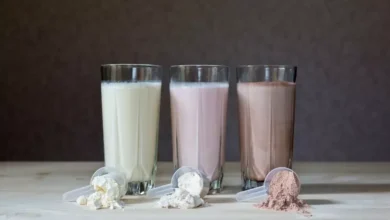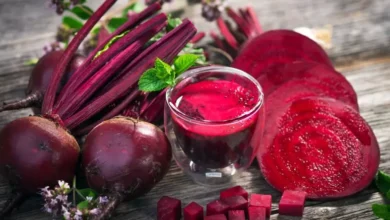Smart Snacking: Healthy Alternatives to Junk Food
Snacking is a normal and often necessary part of a healthy diet—especially when you’re on the go or need a quick energy boost between meals. But let’s be honest: it’s easy to reach for chips, cookies, candy bars, or sugary drinks. Unfortunately, most processed snack foods are loaded with added sugars, unhealthy fats, sodium, and empty calories.
The good news? You don’t have to give up snacking to stay healthy. With the right strategies and smart swaps, you can enjoy delicious snacks that fuel your body, curb cravings, and support your overall health.
Let’s explore why healthy snacking matters and discover smart, easy alternatives to junk food.
Why Healthy Snacking Matters
Choosing the right snacks can help:
- Maintain stable energy levels throughout the day
- Prevent overeating at mealtimes
- Support focus and concentration
- Regulate blood sugar
- Provide essential nutrients like fiber, protein, and healthy fats
In contrast, processed snack foods can lead to energy crashes, inflammation, poor digestion, and long-term health problems like obesity and heart disease.
What Makes a Snack “Healthy”?
A nutritious snack typically includes at least two of these three components:
- Fiber – helps keep you full and supports digestion
- Protein – stabilizes blood sugar and provides lasting energy
- Healthy fats – support brain health and keep cravings in check
The ideal snack is minimally processed, rich in nutrients, and portion-controlled.
Healthy Snack Swaps: Easy Alternatives to Junk Food
Let’s break down some common junk food cravings and how to satisfy them with healthier options:
1. Instead of Potato Chips → Try Roasted Chickpeas or Kale Chips
- Crispy, salty, and full of fiber
- Lower in unhealthy fats
- Add your favorite spices for extra flavor
2. Instead of Candy Bars → Try Dark Chocolate + Nuts
- Choose chocolate with 70% cocoa or more
- Add almonds or walnuts for protein and crunch
- Satisfies sweet cravings while providing antioxidants
3. Instead of Sugary Cereal → Try Greek Yogurt with Fruit and Granola
- High in protein and probiotics
- Fresh berries add natural sweetness
- Use granola sparingly to keep sugars low
4. Instead of Ice Cream → Try Frozen Banana “Nice Cream”
- Blend frozen bananas with a splash of milk and vanilla
- Creamy, dairy-free, and naturally sweet
- Add cocoa powder or peanut butter for variety
5. Instead of Soda → Try Sparkling Water with Citrus or Mint
- Refreshing and hydrating
- No sugar or artificial sweeteners
- Add lemon, lime, or cucumber for natural flavor
6. Instead of Cookies → Try Apple Slices with Almond Butter
- Crunchy and satisfying
- Offers fiber, healthy fats, and natural sweetness
- Sprinkle cinnamon for extra taste
7. Instead of Cheese Puffs → Try Air-Popped Popcorn
- Low in calories
- High in fiber
- Add a dash of olive oil and herbs for flavor
10 Quick and Healthy Snack Ideas
Here are some go-to ideas you can prepare in minutes:
- Hummus with carrot and cucumber sticks
- Hard-boiled eggs with avocado slices
- Handful of trail mix (nuts, seeds, and dried fruit)
- Rice cakes with nut butter and banana
- Low-fat cottage cheese with pineapple
- Edamame with sea salt
- Oat energy balls with oats, peanut butter, and honey
- Sliced turkey roll-ups with spinach
- Chia pudding with almond milk and berries
- Whole grain toast with smashed avocado
Healthy Snacking for Different Goals
Whether you’re trying to lose weight, build muscle, or maintain steady energy, snacks can be tailored to your goals:
- For weight loss: Focus on high-protein and high-fiber options to stay full longer
- For muscle gain: Add protein-rich snacks like boiled eggs or Greek yogurt
- For steady energy: Include complex carbs (like oats or fruit) with protein or fat
Avoiding Sneaky Snack Traps
Even healthy snacks can become unhealthy if you’re not careful. Watch out for:
- Portion sizes: Nuts and dried fruits are healthy, but easy to overeat
- Added sugars: Check labels on bars, yogurts, and granola
- Mindless snacking: Eat intentionally, not out of boredom
Try pre-portioning snacks and avoiding eating directly from large bags or containers.
Make Snacking a Habit, Not a Hiccup
The key to smart snacking is preparation. Keep your kitchen and workspace stocked with healthy options so you’re not tempted by convenience junk foods.
Try this:
- Prepare snack packs on Sundays for the week ahead
- Store fruit in visible spots
- Keep roasted chickpeas or trail mix in your bag or desk
Final Thoughts: Enjoy Snacking the Smart Way
Snacks don’t have to be the enemy—they can be your secret weapon for staying energized, focused, and well-nourished. By choosing whole, nutrient-dense foods and avoiding ultra-processed snacks, you support your body’s needs without sacrificing taste.
The next time hunger strikes between meals, go for snacks that work for you, not against you. With just a bit of planning and awareness, you’ll feel better, perform better, and enjoy every bite.

Hello! My name is Alan Teixeira and I am passionate about helping people live healthier, more balanced lives. From mindful eating to daily habits that promote physical and mental well-being, I believe that small, consistent changes can lead to powerful transformations.
I created this blog to share practical tips, reliable information, and thoughtful insights that can inspire you to take better care of yourself—with balance, mindfulness, and positivity.
If you are looking to improve your health, nourish your body, and build a lighter, more fulfilling routine, you are in the right place. Welcome!





